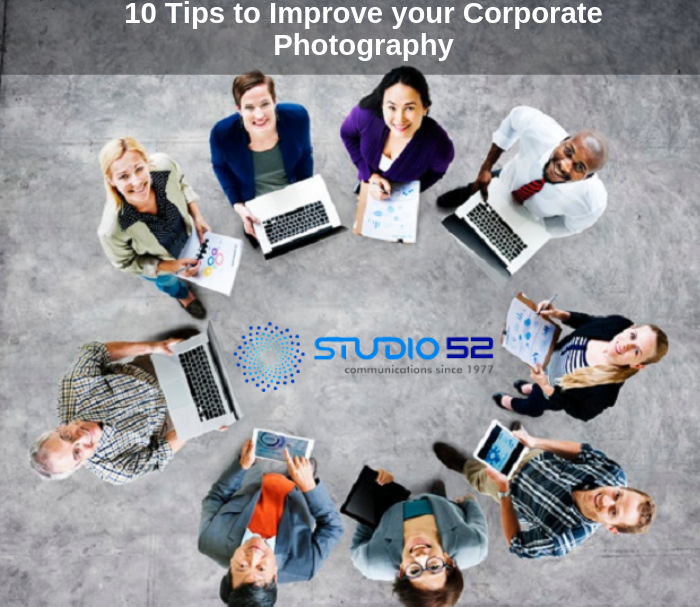Corporate photographs communicate visually with your customers. They have the power to make you stand out in the highly saturated and competitive market. People are drawn to beautiful visuals, and they can play a crucial role in branding, marketing, engaging an audience, inspiring your employees, and even showcasing your leadership.
If your brand lacks visual appeal, it could cost you heavily, which is why corporate photography is an important tool for any business.
Photographs for your business’s website or its ads should not be taken by just anyone. Hire a qualified professional to deliver quality work, make sure they are trained and have the right equipment. This way you’ll capture the identity of a brand in images. However, if it’s the first time you do this and you have no idea what you should do. Here are some tips!
First things first: What do you need to do before the photo session?
Business and session planning is as important as photographic work. Follow these recommendations to make sure everything is taken into account :
1. Create a link with the customer
Relationships are the most basic part of any business and its clients. Remember that customers who have a strong relationship with their brands want to represent them the best way they can. You have to meet them halfway! Show interest, security, professionalism, and educate them. Doing so could create a long-lasting link.
2. Offer the best quality
You have to make a good impression and highlight your strengths. You must ensure the quality of your work is very high. Show your customers your best.
3. What do you need the photographs for
The photos you take will be for advertisements, web pages, social networks or ads in magazines. But what exactly will you place focus on? the Staff? the facilities? Specific scenarios? Maybe, you’ll focus on a product that you are interested in selling? Think about what you want to say and try to translate that into an image. Become familiar with talking about the details and intentions of your company.
4. Evaluate the place in advance
Study in detail space where you will carry out the photographs. Do not hesitate to do so as it is a fundamental part of the planning process of your work. Allow the photographer to take some test shots, so they have a better idea about the lighting conditions and other technicalities.
5. Set an appropriate time
When you make an appointment to portray the company’s staff, choose the mornings. This way you will prevent people from looking tired after having spent a long day at work. They will have much more energy to carry out the session with more comfort.
6. Use soft light
If you work with natural light in your portraits, avoid “hitting” the subject with direct sunlight. That would create a lot of hardness, contrast and unwanted shadows. Whenever you consider it necessary, complement the window light to properly illuminate the picture.
7. Avoid the shadows
Corporate photographs are usually quite clear. If you look at portraits of this type, you will notice that the light is well worked. This can also avoid unpleasant shadows on the face and/or background. As we said before, soft light is your best option. But remember that to illuminate dark spaces you will need light bouncers.
8. The use of flashes
The truth is that there are no specific rules on how many flashes you should use or where you should place them for good results. It’s all about trying it out for yourself. It’s important to be careful with shadows while working with flash. Make sure the flash doesn’t create a huge shadow over your objects. If there are windows nearby, draw the curtains so reflections don’t appear.
Whatever your decision regarding the flashes, try several options.
9. Natural poses
Part of knowing how to represent the values of the company is to show your staff in the best possible way. You should think about the poses you want the people you are going to portray to be in. The way they accommodate their arms, for example. Their gestures send message to the audience so you need to think about what you want those messages to be.
Make sure the poses look natural. If you have to photograph a specific situation, it should be one that looks realistic (a secretary talking on the phone, for example). If the picture looks very forced, it will distract the viewer from the message you’re trying to send.
10. To wrap things up…
Corporate photography requires a well-thought-out planning process. The objective of all of this is to present the identity of a company through images. These were some very simple recommendations to help you organize a session with your client and carry it out successfully.
Remember that, business is as important as photography. You should always be polishing your profile to attract the attention of other organizations. Don’t hesitate to contact the right people! It could open many doors for interesting projects.





